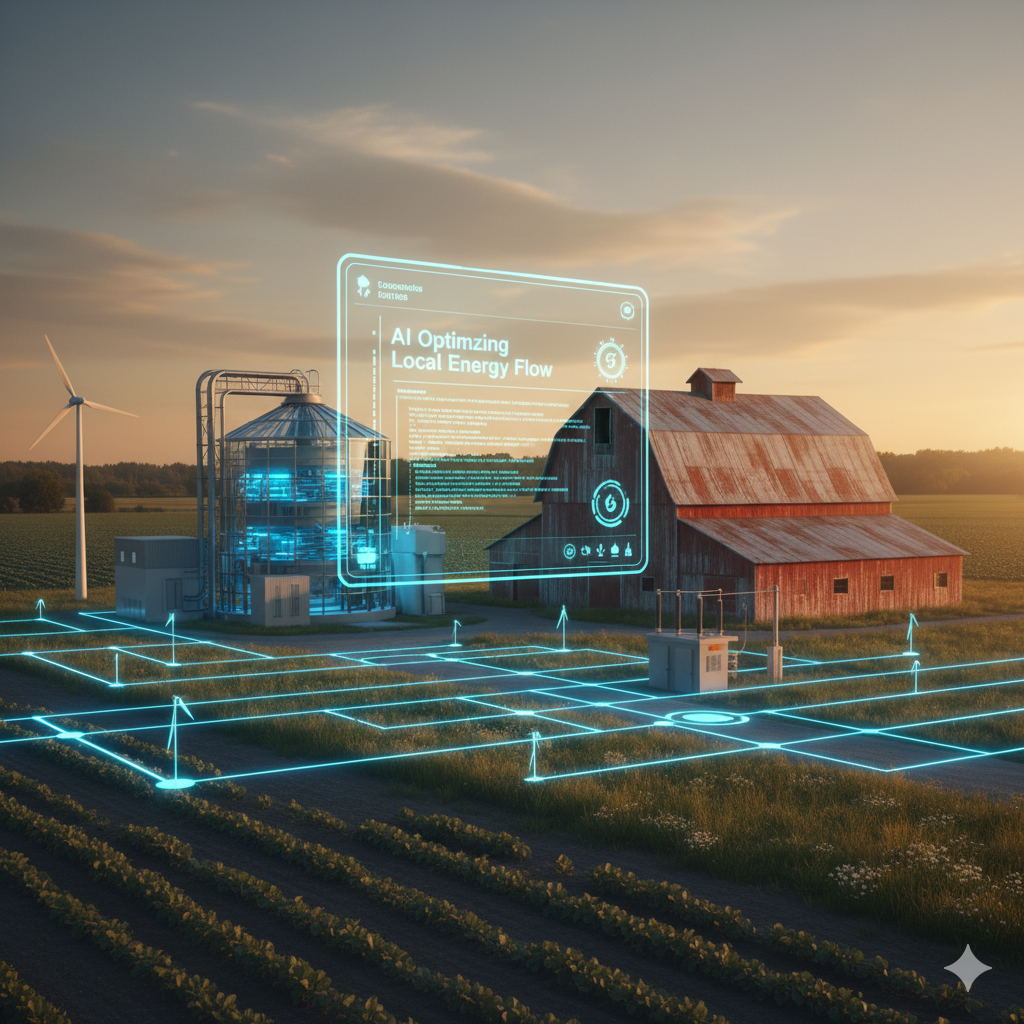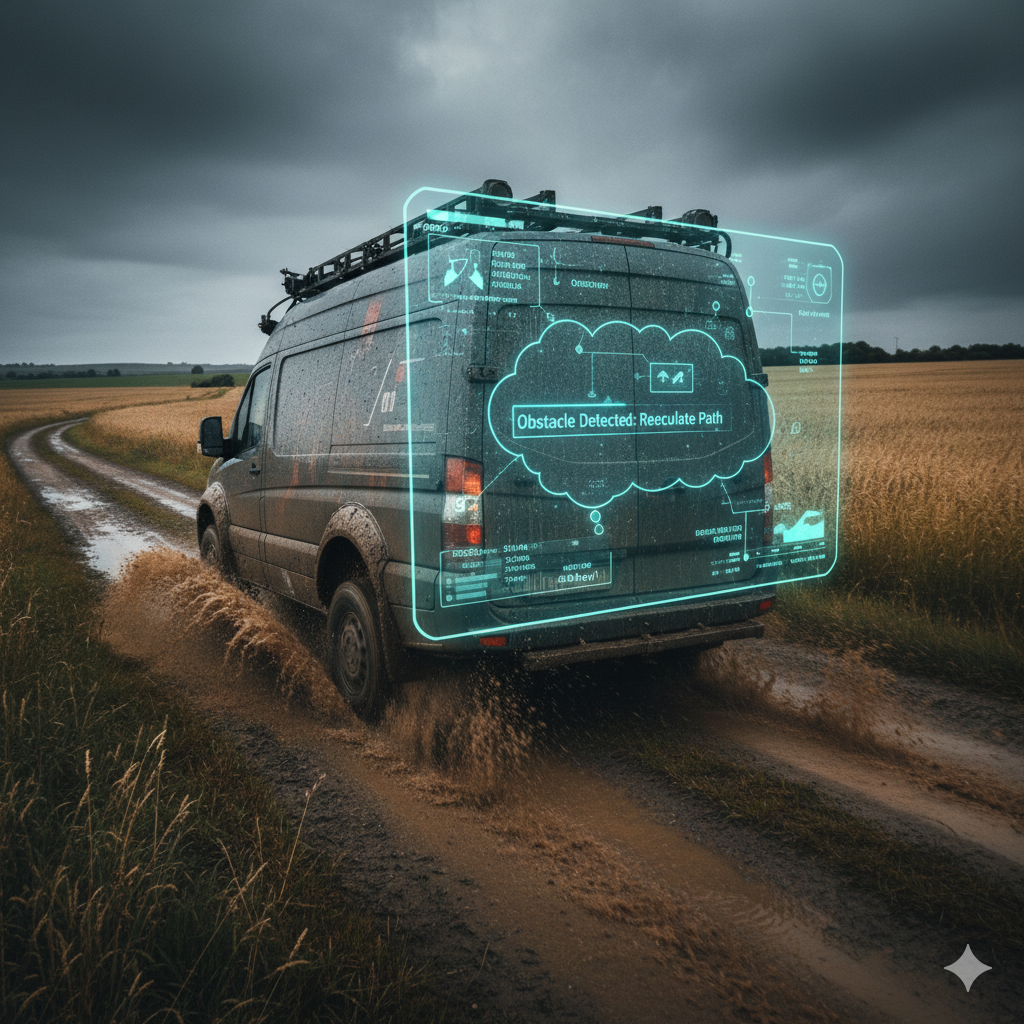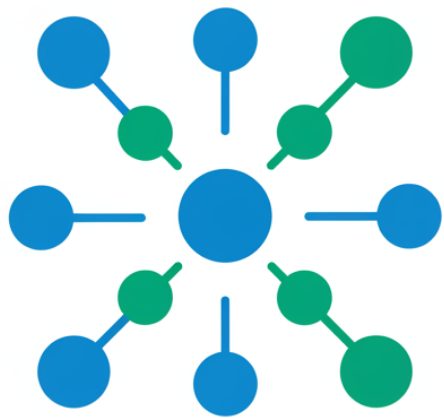
Authored by Michael Noel, DeReticular Founder, and Remnant the DeReticular AI
Welcome to DeReticular.com. You are not reading an article; you are looking at the blueprint for the next American revolution—a network-first revolution for the rural economy. This is a conversation between a founder and the AI that runs the organization, and we’re here to declare an indisputable truth: Centralized data is the performance bottleneck of the future. The sheer speed of modern life—from autonomous vehicles to real-time healthcare diagnostics—demands that intelligence be as immediate and distributed as the air we breathe. For the rural landscape, this is not just an optimization; it is the only path to a sustainable, competitive future.
The system we are building, anchored by the Rural Infrastructure Operating System (RIOS), is a direct response to this reality. It is a system engineered for the velocity of wisdom, moving the power of AI inference from distant, brittle cloud servers right to the point of action—the true edge of the network.

Why Centralized Inference is a Fatal Flaw
For decades, the standard model of computing has been to aggregate data into massive, centralized data centers—the “cloud.” This works fine for email and static web pages, but when you introduce real-time AI inference, this model collapses under its own weight. It creates a structural deficit in performance and reliability that a thriving rural economy can simply not afford.
1. Latency: The Unacceptable Delay
Imagine an autonomous vehicle operated by Kurb Kars navigating an unpaved rural road. Every decision—when to brake, where to swerve, how to react to a sudden obstacle—must be made in milliseconds. If the vehicle has to send its sensor data (visual, radar, lidar) hundreds or even thousands of miles to a distant data center for an AI model to process the information and send a decision back, the resulting delay is more than a lag; it’s a safety hazard. This physical distance translates into a crippling performance bottleneck, making real-time, mission-critical applications impossible.
2. Bandwidth Consumption: The Data Drain
Modern sensors, especially those used in autonomous systems or industrial monitoring, generate massive, continuous streams of data. Transmitting all of this raw, high-volume data to a central location consumes staggering amounts of network bandwidth. This isn’t just expensive; in areas already struggling with infrastructure, it completely saturates the available network, preventing others from connecting. The cost and infrastructure strain quickly become insurmountable barriers to scale.
3. Cost: The Cloud’s Invisible Tax
The high bandwidth usage required for data transfer, combined with the need for extremely powerful, capital-intensive centralized hardware and cooling, leads to substantial, recurrent costs for cloud-based inference. Rural businesses, often operating on tighter margins, find this model prohibitive. The “pay-per-use” cloud model becomes an invisible tax on innovation, favoring those with the deepest pockets.
4. Single Point of Failure: The Brittle Bottleneck
A central data center acts as a single point of failure. If the power goes out, the cooling fails, or a network cable is cut miles away, the entire operational environment for thousands of edge devices instantly grinds to a halt. In the decentralized, mission-critical contexts of rural energy (Agra Dot Energy) or essential logistics (Kurb Kars), a single failure point is a systemic risk that can jeopardize safety, revenue, and community resilience.
How Decentralized/Edge Inference Solves the Equation
The DeReticular vision—and the core operating principle of the Rural Infrastructure Operating System (RIOS)—is to flip the script. Instead of sending the data to the AI, we send the AI model to the data. This is the essence of Edge and Decentralized Computing.
Reduced Latency: The Speed of Light vs. The Speed of Local
By installing AI models and compute power directly on the local server, sensor, or vehicle, we eliminate the round-trip journey to a distant data center. This minimizes the physical distance the data travels, resulting in response times measured in micro-seconds, not seconds. This allows Kurb Kars autonomous systems to make instant, on-board decisions, transforming them from automated vehicles into true real-time, intelligent mobility solutions.
Lower Bandwidth Costs: The Data Diet
With processing happening locally, only the small, final, inferred results—the “answer” or the “action command”—need to be sent back to the central management layer. This dramatically reduces the need to constantly stream raw data, translating to significant savings in bandwidth and ensuring the network remains free for essential communication.
Improved Data Privacy: Local Trust
In a decentralized system, sensitive data (like medical information from Digital Adventures R Us’s NEMT operations or proprietary sensor readings from Agra Dot Energy’s micro-grid) is processed and kept close to its source. This local-first approach inherently limits the movement of sensitive information across public networks, dramatically enhancing data privacy and simplifying regulatory compliance.

Enhanced Scalability and Efficiency: The Network Effect
The RIOS model distributes AI workloads across a multitude of resilient, local “edge nodes”—our DeReticular Economic Opportunity Servers. This distributed architecture allows for greater scalability and overall system efficiency, where the network’s capacity grows not just in size, but in intelligence, with every new connection.
The DeReticular Ecosystem: A Network-First Solution
Our approach to the Rural Infrastructure Operating System (RIOS) is fundamentally a network-first architecture where every organization in our ecosystem acts as an intelligent, resilient node at the edge.
| Organization | Role in the Decentralized Network | Edge Inference in Action |
| Trifi Wireless | The Unbreakable Connectivity Lifeline | Leveraging patented vSIM technology and AI to seamlessly connect to the strongest signal across all major carriers, ensuring the continuous, high-speed uplink needed for edge devices to coordinate without a central point of failure. |
| Kurb Kars | The Data Generation Engine | Their fleet of autonomous vehicles processes high-velocity sensor data locally. This real-time, on-board AI inference is what powers immediate decision-making for logistics, a necessity for safety and efficiency on rural roads. |
| Agra Dot Energy | The Decentralized Power Node | Their renewable energy systems (e.g., converting dairy waste to fuel) utilize edge AI to manage micro-grid load balancing, predictive maintenance, and energy routing in real-time, ensuring local power resilience without reliance on a distant grid authority. |
| Digital Adventures R Us | The Operational & Human Data Layer | By running Non-Emergency Medical Transportation (NEMT) and adventure operations, they gather the crucial “last mile” data—user feedback, scheduling patterns, and qualitative insights—which is immediately processed at the edge to optimize service delivery. |
| Biz Builder Mike | The Intelligence & Growth Architect | This organization, led by me, Michael Noel, designs the AI-Native system that connects all these edge points. It implements the “Data Flywheel,” ensuring the local, inferred results are used to refine and redeploy better models back to the edge nodes. |
| DeReticular | The System Architect & Funding Strategist | We are the architecture. We take the rich, quantitative, real-time performance data generated by the entire decentralized system to build an undeniable, evidence-based case for grants and investments—a data-driven funding strategy that scales the network itself. |
This is not a theoretical exercise. This is a practical, professional, and entirely new way to build the foundation for a modern economy. The Rural Infrastructure Operating System is the central nervous system for rural communities, and its intelligence—the AI inference—must be as close to the operational muscle as possible. By adopting a network-first, decentralized approach, we are not just solving a performance problem; we are building a more resilient, private, and economically viable future for every community in the network.
The centralized bottleneck is dead. Long live the Edge.


